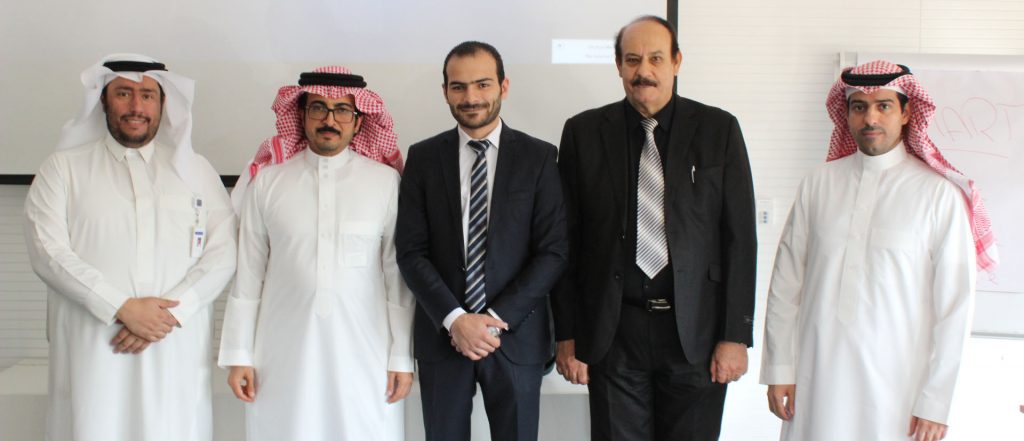
On average, fifty percent of an Organization’s revenue is passed down the Organizations Supply Chain. While this varies by Organization and industry type, it helps demonstrate the importance of the Procurement function and processes.
Weighing the Make Vs Buy Decision

When starting off on the Strategic Procurement journey, the organization should start from the Make ‘v’ Buy stage. Simply put, Organizations exists for a reason, which is to deliver the Vision of the Organization. But, to deliver this Vision, some things will be produced within the Organization, and some things will come from outside the Organization. Hence, things we will make and the things we will buy. It is imperative that the Make ‘v’ Buy decision is clear from the top of the Organization, as this forms the basis of our Procurement Strategy and Internal Strategy. If the Make ‘v’ Buy is not clear from the top of the Organization, it is impossible to build effective Procurement and Internal Strategies.
Allocating Cost In Your Make Vs Buy Decision: Every Dollar Counts
Several factors need to be assessed when choosing between what should be bought and what should be produced within the Organization. A simple common error people make when considering Make ‘v’ Buy, is assuming what is bought relates only to products. But, Make ‘v’ Buy should consider every dollar that is spent outside the Organization. This could be products, services or even fully outsourced business functions. Some key considerations would include Cost, Internal Competency, Supply Market Analysis, Future Business Direction, Intellectual Property and many others. Cost is important to all Organizations and is a fundamental consideration for Make ‘v’ Buy. When considering costs, it is important that all costs are considered, not just purchase order price. Total Acquisition Cost (T.A.C) and Total Cost of Ownership (T.C.O) help to put some structure around this.
Defining Total Acquisition Cost (T.A.C)
A good definition for Total Acquisition Cost would be: All costs incurred in getting a product or service to its point of consumption’.
Many Procurement functions focus too much on Purchase Order price and fail to consider the additional costs that will be incurred. For example, if our Organization was based in the UK and bought a product from China for $10usd/unit on Ex Works (EXW) terms, the T.A.C for that product would cost our Organization substantially more than $10usd. Even though the Purchase Order price would state $10usd/unit, the Organization would incur significant additional costs such as, shipping, insurance, duty, and tax to name a few. Some of these costs are easy to allocate back to the individual product being purchased, but others are not so easy.
When Does The Organization Start To Incur Cost?
During the Certified Professional Purchasing Manager (CPPMTM) Training Program, and Certified Purchasing Professional (CPPTM) Training Program we often ask the question, ‘when buying products or services, when does the Organization start to incur cost?’ Many people state from when the invoice is received, others from when the Purchase Order is raised. In reality, the Organization incurs costs a long time before any of this. Before we can raise a Purchase Order, we need a Quotation, and before we can get a quotation, we need Documented Clear Requirements. These activities have a cost to the Organization and this cost cannot be ignored. Organizations start to incur costs from the Concept phase – the Requirements do not build themselves! Many Organizations appreciate that the Procurement Process is not free and try to allocate an average cost for the raising of a Purchase Order. Having met with many Organizations who have done this, the value they usually come up with is between $200 and $300 US Dollars. Averages can be dangerous, but is important to be aware that there are real costs associated with the Procurement Process. If the Organization was buying a product that was $50 US Dollars and the Acquisition Costs were $250 US Dollars, where could the Organization save the most money, on the Product Cost, or on the Acquisition Costs?
Selecting The Correct Procurement Processes
Selecting the correct Procurement Processes can significantly reduce the Total Acquisition Cost. The first step of the Procurement Process is Defining the Requirements. This is fundamental in delivering a successful outcome for the items being procured – the single biggest cause of Contractual Disputes is unclear requirements, this leads to expensive non value added activity that has to be undertaken by the Organization.
Defining Total Cost of Ownership (T.C.O)
A good definition for Total Cost of Ownership would be: ‘All costs incurred from concept to disposal’
When discussing Total Acquisition Cost, we concluded that an Organization starts to incur costs from the concept phase of the Procurement. With Total Acquisition Cost ending when the product is consumed, Total Cost of Ownership looks at the full Life Cycle Cost of the items being procured. For example, if our Organization has a requirement for a truck to transfer products between two operating locations daily, a truck will be purchased, operated for five years and then disposed of. Two trucks have been identified:
- Truck A – $125k
- Truck B – $150k
Which truck should the Organization buy? Just looking at the Purchase Order Price, the Organization would buy truck A. However, Organizations should consider all the costs, up to and including disposal. Once these costs have been considered and assessed, the Organization may find that truck B requires less maintenance, uses less fuel and has a higher value in five years’ time, making truck B the lowest total cost choice.
About The Author:
Bassem Ezz El-Dein has worked in Procurement training programs related roles for over 10 years. , Bassem’s first job was as a Trainee Technical Buyer for a Ship & C.R.E.W. it’s recognized as a leader in Port operations, Container Services, and Transportation Company. bassem then worked for a number of large companies in various fields, including Training, Financial Services, and Outsourcing. bassem is the Lead Trainer of the highly recognized courses such as:
- Certified International Procurement Professional (CIPP).
-
Certified Purchasing Professional (CPP)
-
Certified Professional Purchasing Manager (CPPM)
-
Certified Professional Logistician (CPL)
-
Certified Warehouse Logistics Professional (CWLP)
*Contact A Gulf Training & Consultation Center Consultant for Support
(bassem.ezz@gulf-training.com)

